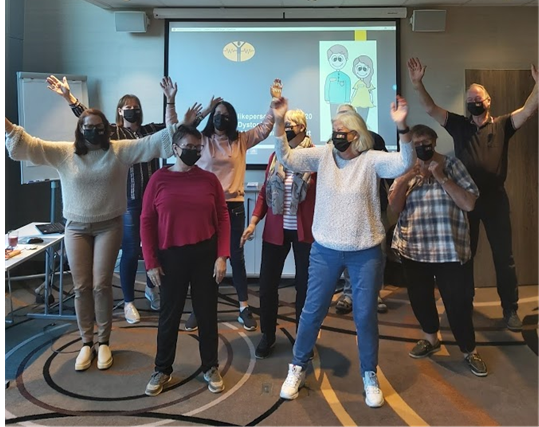The Norwegian Dystonia Organisation (NDF) held a training class for contact persons last October in Bergen, Norway.
On the webpage NDF have listed contact persons from within the organisation who can be contacted about dystonia. It is important that all contact persons make it clear that they are not medically trained.
A contact person is a person who also has dystonia and has had the diagnosis for more than a year or two. They will have attended special training and have knowledge of dystonia in general. It is important to keep in mind that within the diagnosis of dystonia the symptoms can be very different from person to person. Therefore it is important for the contact persons to have some knowledge of the most common types of dystonia.
Dystonia is not very well known, despite being the third most common movement disorder, many who are newly diagnosed will have some questions. A contact person is there to listen and to give general answers. For example for newly diagnosed patients, treatment with botulinum toxin (BTX) may not be optimal in the beginning. This is because the Neurologists/ Movement disorder specialists, has to adjust the treatment individually. This might take time, maybe 2, 3 or more treatment occasions.
The key message is that there are people with the same diagnosis that can be contacted and most of all they can listen and give general advice on how to manage the challenges that dystonia might bring forth in daily life. They are not medical professionals. To talk to someone who knows exactly how it feels, how dystonia can affect you, what challenges and misunderstandings there can be, are very important issues for most people who are newly diagnosed with dystonia.
The main objectives of the Training Class:
- Introduce and create an interest for volunteer work within being a contact person.
- Point out important qualities of being a contact person
- How to set limits
- Confidentiality
The main qualities of a contact person:
- To be a person who can empathise and has had dystonia for some time.
- A person with the ability to listen and to focus on the person who contacts the organisation, keeping in mind that many things are different from one person with dystonia to another, but that there are also a lot of similarities
- A person who uses his/her own experiences as a background
- A person who sees possibilities
- A person who sets limits for themselves
- A person who gives non-professional guidance
- Someone that the organisation has appointed to have a role as a contact person.
Examples on advice a contact person can give:
- To look at the situation positively, but to not give false hope
- To encourage the patient to find new ways to do things that suits their particular condition.
- To advise the patient that it is ok to take more frequent breaks when needed.
The participants in the Training Class making a Jump for Dystonia.
Merete Avery
Operations Manager
Dystonia Europe

